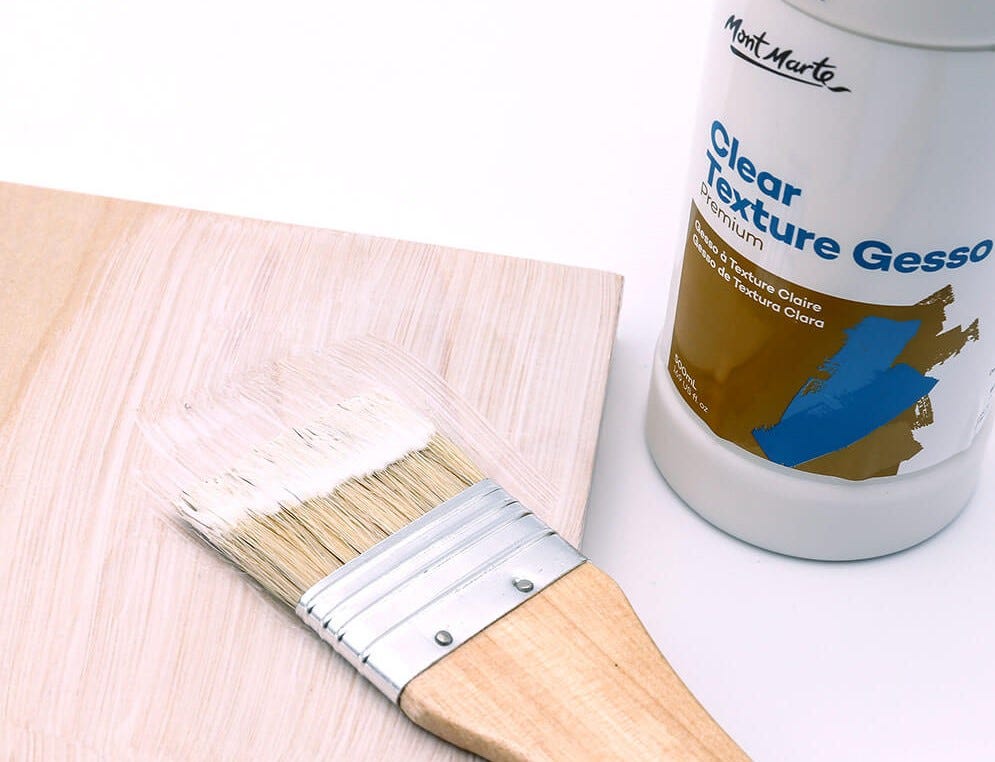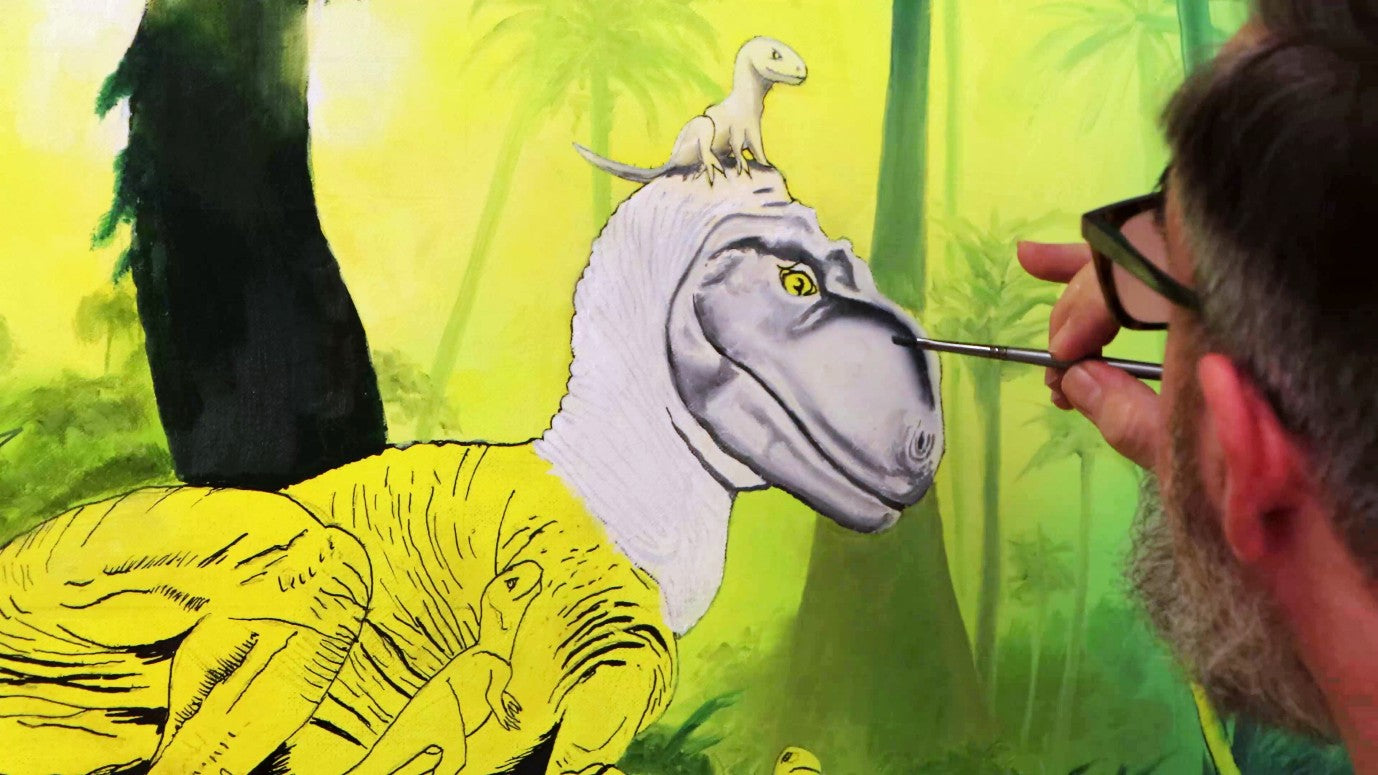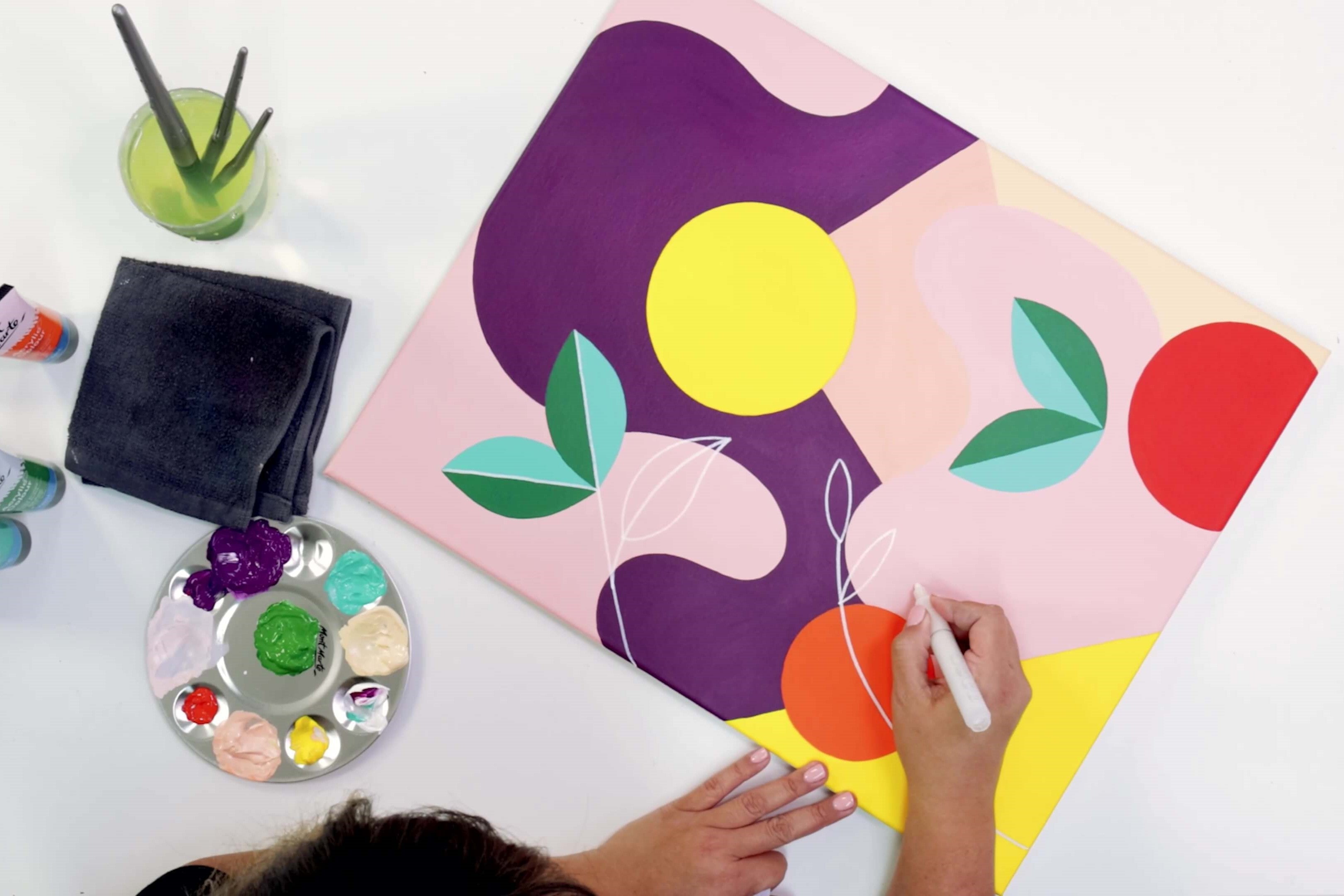You’ve probably heard of gesso, but what is it and what do you need to know before applying it to your project? We’ve put these common questions to the test and answered a few frequently asked gesso questions.

1. What is gesso?
Gesso is a universal primer that can be used for preparing surfaces such as canvas, paper, cardboard, painting boards, wood, air drying clay and plaster, before you paint or draw on them. Prepping the surface can help extend the life of acrylic paintings, give a matte finish to clay sculptures or be used to create tooth in paper for drawings.
2. How do you pronounce gesso?
Great questions actually. Gesso is pronounced jess-o, so feel free to drop that next time you’re wanting to impress friends.

3. What is clear gesso used for?
A clear gesso is used for preparing your artwork’s surface with a transparent finish. Our Mont Marte clear texture gesso will provide tooth to projects before you start or after to seal (excluding oil paint). It can be used on paper, card, timber, canvas and linen.
4. What Mont Marte gessos are available?
Our range of gessos are available in four varieties. A gesso like our 500ml gesso in tub, dries to a glossy, shine finish making it great for priming over existing paintings or canvas. A white texture gesso is also available for projects needing a transparent, matte primer that can be drawn or painted over, a clear texture gesso, for projects that need a clear coat and a matte finish and a black gesso, if you’re looking for a dramatic contrast or working with dark paper or canvas.

5. Will gesso on plaster or clay work?
Gesso on plaster? Yes. Gesso will work well on plaster and clay, especially if you’re looking for a matte finish. Our clear texture gesso dries to a clear and fine consistency, making it great if you’re wanting your clay to have a less shiny texture and opting for a matte look instead.
6. Can I use gesso over acrylic paint?
Yes, in fact, gesso over acrylic paint is a great way to re-use an old canvas. If there are any textural elements, you will need to sand the canvas back first, then apply white gesso such as our Premium Mont Marte Gesso, using a foam brush or a large paint brush to your canvas or painting board. If you’d rather see it in action, check out our how to video.

7. Can I use gouache on gesso?
You can use gouache on gesso paper by applying a coat of thin, transparent gesso like our clear texture gesso with a taklon brush, then wait until your paper has dried. Once dry, it’s ready for gouache.
8. Can I use gesso for pastel works?
You can use gesso for pastel projects. A white or clear texture gesso can be used to prime paper beforehand to match the paper surface and help pastel pigments stick easier to paper. Depending on the paper you choose to use, this will decide what gesso you reach for. For coloured stock it’s best to use a clear texture gesso. Our white texture gesso is great for white paper pastel projects or grab black gesso for projects on dark paper. When it comes to oil pastels, they will stick to most surfaces so you can probably skip out on the gesso for oil pastels, but gesso will work wonders for dry pastels.

9. What about gesso on oil paints?
You can prime a canvas with a gesso like our Premium white Mont Marte gesso or black gesso, or for a matte finish and transparent coat, opt for a white or clear texture gesso, before getting the oil paints out. Keep in mind, you can prime a canvas with gesso before using oils but once the oil paint is applied, gesso can’t be placed on top.
10. Can I use gesso on a drawing?
Our clear texture gesso is designed to show linework underneath once it has been applied. A single thin coat will be enough to cover a wooden panel or canvas. You can apply gesso using a taklon or foam brush then wait until it has dried, then your surface will be ready to be drawn or painted over.

11. How do you apply gesso?
You can apply gesso with a taklon brush or a foam brush. The number of coats you apply will depend on the project and the type of look, you’re after. For a glassy look, you can apply up to six coats of gesso, but it’s best to start with a few and see how your project looks. You can also sand your project before and after applying gesso for a smoother, matte finish.
If you’re working with a large canvas or surface area and a brush just isn’t cutting it, our premium Mont Marte gesso can be applied in an air brush. Opt for an opaque gesso like our premium option so the consistency can be thick enough to travel through the air brush.
Still not sure about which gesso to use? Check out our how to choose the right gesso for your project video. Or browse the Mont Marte gesso range.
Do you have a question? Send us through your questions at @montmarteart on Instagram or Facebook so we can answer it for you.





























